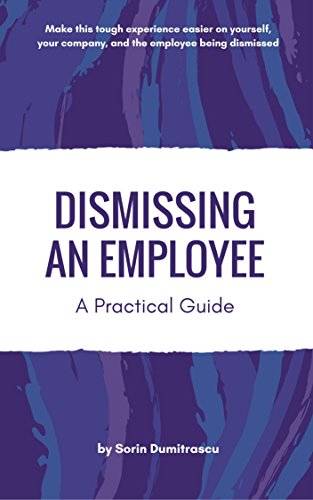

Dismissing an Employee: A Practical Guide
by Sorin Dumitrascu
Dismissing an employee is never a stress-free task. It can be emotionally daunting and – if done improperly – could have legal ramifications. However, with preparation, you can make this tough experience easier on yourself, your company, and the employee being dismissed.
To make the dismissal process run smoother, there are four steps you can take when considering whether to dismiss an employee. The first is to ensure the employee knows the rules. The second is to warn the employee of inappropriate performance or behavior, and plan corrective actions. The third is to assess the employee's improvement after a given time frame and then make a final decision. The fourth is to prepare a clear and concise dismissal letter, if necessary.
In this course, you'll learn more about the appropriate steps to take prior to dismissing an employee. This includes using documentation to facilitate awareness and following a progressive disciplinary procedure. You'll also find out how to determine if a dismissal is warranted based on the offense, an assessment of the employee, and the organizational impact.
At some point in their careers, most managers will have to undertake the unpleasant task of dismissing an employee. Although this can make for an uncomfortable conversation, both the manager and the employee can learn and grow from the experience if it's handled correctly.
If you feel unsure about how to handle dismissals there are guidelines you can follow that will increase your confidence and make for a smoother experience. Handling dismissals effectively means preserving the dignity of the employee and minimizing the impact on the team and the organization.
You, as a manager, can follow three steps to managing dismissals effectively. This course outlines the steps involved in preparing for dismissals; guidelines for conducting a dismissal interview, such as dealing with employee reactions; and what to consider when following up on the dismissal after the meeting.
To make the dismissal process run smoother, there are four steps you can take when considering whether to dismiss an employee. The first is to ensure the employee knows the rules. The second is to warn the employee of inappropriate performance or behavior, and plan corrective actions. The third is to assess the employee's improvement after a given time frame and then make a final decision. The fourth is to prepare a clear and concise dismissal letter, if necessary.
In this course, you'll learn more about the appropriate steps to take prior to dismissing an employee. This includes using documentation to facilitate awareness and following a progressive disciplinary procedure. You'll also find out how to determine if a dismissal is warranted based on the offense, an assessment of the employee, and the organizational impact.
At some point in their careers, most managers will have to undertake the unpleasant task of dismissing an employee. Although this can make for an uncomfortable conversation, both the manager and the employee can learn and grow from the experience if it's handled correctly.
If you feel unsure about how to handle dismissals there are guidelines you can follow that will increase your confidence and make for a smoother experience. Handling dismissals effectively means preserving the dignity of the employee and minimizing the impact on the team and the organization.
You, as a manager, can follow three steps to managing dismissals effectively. This course outlines the steps involved in preparing for dismissals; guidelines for conducting a dismissal interview, such as dealing with employee reactions; and what to consider when following up on the dismissal after the meeting.

